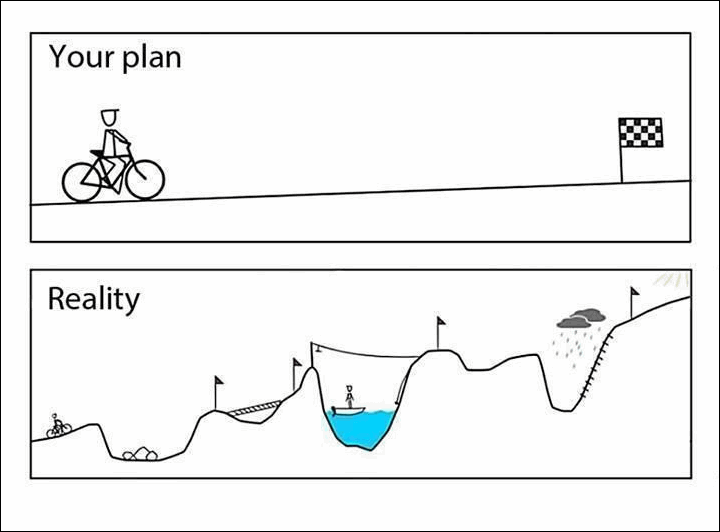
I would like to share some of the thoughts expressed in the article and add my own perspective.
Honesty and Transparency Above All
Dan writes:
"As we wrapped up the month of April, the sample account took another loss. Once again, due to RUT. When you take two monthly losses in a row with a high probability trading system, it stings a bit. My goal is always to accurately represent what I’m doing and not pretend to be some guru with a 100% win rate or who conveniently fails to disclose trading results. I firmly believe in honesty and transparency rather than deception or what you’re hoping to hear."
SteadyOptions took three monthly losses in a row, also with a high probability trading system. Yes, it stings. But do you really believe that anyone is able to trade without losses? Whoever claims to not having any losses simply fails to accurately report his performance. Our results are fully documented, every single trade is on the performance page, winners and losers. Similar to Dan, I believe in full transparency. For a trading strategy that produced triple digit returns 5 years in a row, 3 losing months in a row is statistically expected at some point.
Dan continues:
"Armchair traders will say that we should change our strategy or not have been trading the strategy, but changing strategies every time we lose means we effectively have no strategy. Additionally, knowing when a strategy will work or won’t work is 100% impossible unless you’re Goldman Sachs, the Fed (arguably the same as GS), or a high frequency trading firm.
Wise words.
Probability Is Not Certainty
One of the reasons to our performance this year was a new strategy (RIC - Reverse Iron Condor) we introduced and described in Lessons From Q1 2016 Earnings Season article. It was those 4-5 losers that contributed the most to the negative performance. We discussed why this happened in the article and in more details on the forum. This is a high probability strategy - however, probability doesn't mean certainty. Sometimes even high probability strategies produce few losers in a row.
The RIC strategy bets on big post-earnings moves which happen 90% of the time for some stocks. To put things in perspective, NFLX, GOOG and LNKD produced some of the smallest post-earnings moves in history. What are the odds?
Dan mentions that the start of 2016 has been challenging for many, if not most or all, non-directional options traders. We experienced it with our butterfly strategy. After booking 7 winners in a row, our last two trades became big losers due to wild market moves in February-March. Again, those are strategies that we have been using with great success, but no strategy wins 100% of the time. Those two big losers along with few big RIC losers impacted the most our 2016 performance. Rest of the strategies actually performed pretty well.

How could the Fidelity Magellan fund make 29% per year from 1977-1990 while the average investor in the fund lost money? It's because investors always visualize the path to look like "your plan" and when it's not, the powerful impulse of fear and greed wins out (causing inflows around tops and outflows around bottoms).
After a string of losses, what's next?
SteadyOptions produced outstanding returns in the previous 4+ years. To put things in perspective, consider this: if you started investing in the stock market in 2007 based on historical returns of ~10%/year, then watched your money losing half of its value, would you quit? Some people would. Those who didn't, watched their money triple in the following 7 years. If you quit each time few losing months happen, you will just become part of DALBAR statistics. Losses are part of the game, and if you can not endure losses, you should not be trading.
I would strongly advise not to think in terms of "how and when to recover". Just continue executing your trading plan if you believe it still has an edge, and the results will come. This is exactly what we intend to do. Focus on following your trading plan not the short term results of it. Robust strategies are profitable in the long term time frame.
“It is critical to understand human nature if you want to succeed at investing. I’ve seen this time and time again. I’ve had investors who have been with me for years, getting great performance, and then suddenly we have a bad year or a bad couple of years, which we’ve told them about ahead of time, right, because we can always show them that nothing works all the time, and they still bail. Basing their decisions on short-term results is in fact the biggest mistake investors make.” - Jim O’Shaughnessy
Related Articles:
Are You EMOTIONALLY Ready To Lose?
Why Retail Investors Lose Money In The Stock Market
Are You Ready For The Learning Curve?
Can you double your account every six months?
Performance Reporting: The Myths and The Reality
Lessons From Q1 2016 Earnings Season



Join the conversation
You can post now and register later. If you have an account, sign in now to post with your account.
Note: Your post will require moderator approval before it will be visible.